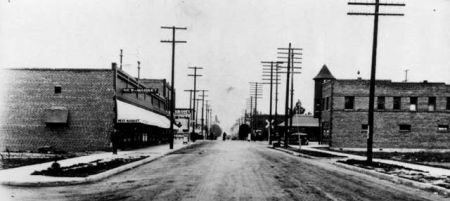Watts, one of the most famous neighborhoods in Los Angeles, California, is located approximately seven miles southeast of downtown. Originally part of the Rancho La Tajauta Mexican land grant, Watts was incorporated in 1903 and began to grow as a community in 1907, when the Watts Station was built and transportation within Watts became easier. The town was attractive to working class families and differed from other suburban communities in that it welcomed white, black, and Latino families. By 1920, 14% of Watts’ population was African American which at that time was the highest in California.
In 1926, Los Angeles annexed Watts. The African American population continued to grow after annexation and by World War II the community was inhabited mostly by middle class blacks. World War II brought tens of thousands of black and white migrants from Louisiana, Mississippi, Arkansas, and Texas. The city built new public housing projects to accommodate the increased population, most of which were located in Watts. By the early 1960s, these projects had become largely dominated by African Americans, as whites moved to the surrounding suburbs which excluded black settlement. Watts increasingly became an island of black poverty surrounded by middle class white suburbs.
This economic and racial isolation generated resentment against insufficient hospitals and schools and frequent incidents of police brutality. The latter led to the Watts Riots on August 11, 1965 following an altercation between Marquette Frye, an African American motorist, and Lee Minikus, a white police officer who pulled him over for drunk driving. The Watts riots involved residents’ looting and vandalizing the area, attacks on the police, and arson. During the six day riot 34 people were killed and 1,032 injured. The riot caused an estimated $40 million in damage and 3,438 arrests.
After the riots, Watts suffered further as gangs grew more powerful and the level of violence rose. Between 1989 and 2005, the police reported more than 500 homicides in Watts, most of them gang-related and connected to the fight over control of the illegal drug market. Four gangs, the Watts Cirkle City Piru Bloods, Grape Street Watts Crips, Bounty Hunter Watts Bloods, and PJ Watts Crips, were responsible for most of that violence.
The gang violence and continuing poverty and isolation of Watts generated a shift in population. Those African Americans who had the resources left the area for other parts of Los Angeles and in some instances for a return to the U.S. South. As blacks abandoned the area, primarily Hispanic immigrants from Mexico and Central America replaced them. By the 2000 census, Watts was no longer a predominantly black section. Almost 61% of the residents were Latino and only 38% were African American. Watts was no longer black but it remained impoverished. Half of the families and individuals in Watts had incomes that placed them below the poverty line.
Neighborhood leaders have recently begun a strategy to overcome Watts’ reputation as a violent and impoverished location. They point with pride to the museums and art galleries that were opened in the area in the 1990s surrounding the Watts Towers, a multistory sculpture in the heart of the community.

